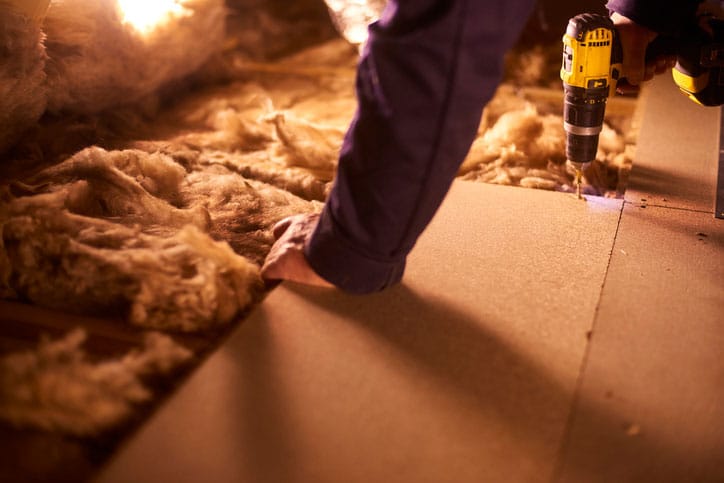Your attic insulation impacts how hot or cold your house is at any given time. It keeps your energy bills low and extends the life of your HVAC system. Having the right amount of insulation will benefit every area of your house – not just your attic. Let’s take a look at how thick attic insulation should be.
Insulation Thickness Varies by Material
When it comes to how thick insulation should be, there is no one-size-fits-all answer. Several factors influence how much insulation an attic needs. Energy Star recommends about 10-14 inches of insulation for most attics, but you may need more or less than that.
Insulation thickness is based on R-value, which measures how well the insulation resists heat flow. The higher the R-value, the better the material is at insulating the home. Calculating R-value is quite tricky because it takes into account the type of insulation, age, thickness, density and moisture accumulation. Energy Star recommends insulating to R-38, but that may not be ideal for every home.
Also keep in mind that some attics may not support a 12″ layer of insulation. In that case, you may need a denser insulation that can lock in temperature despite its lack of height. McLean Roofing and Siding can recommend the best type of insulation for your home during your consultation.
Signs You Don’t Have Enough Attic Insulation
If your energy bills are unexplainably high, you may need more insulation. But since energy bills aren’t based on insulation alone, that may not be enough to base your decision on.
You could conduct a visual inspection of your attic to determine if it’s well insulated. If you can easily see the attic floor joists, you probably need more insulation. If the joists are well covered, you’re probably fine. If you notice low points in certain areas, you may not need all-new insulation. You’ll just need to fill in those areas to preserve energy in the home.
Should I Get New Insulation or Add to My Existing Insulation?
You may be able to add onto your existing insulation, depending on how old it is and what style of insulation you’re adding. For example, you could top-off relatively new loose fill insulation with another layer of loss fill. You could even add blanket insulation on top of loose fill, as long as it does not have a paper or foil backing.
It’s often best to start from scratch with attic insulation, particularly in older homes. Let’s say, for instance, that you had birds or mice in your attic at some point in time. Getting new insulation would remove pest waste that may stink up your house in extreme temperatures.
Once again, your attic insulators can recommend the best arrangement for your home.
Is It Possible to Have Too Much Insulation?
More isn’t always better when it comes to insulation. There comes a point when the extra expense isn’t worth the potential benefit. Not to mention that workers may need to get into your attic for cable, electrical, HVAC, or any number of other service issues. If the insulation is so high that they can’t move around, they may not be able to complete their jobs. Our professional insulation team will find the right balance for your home’s unique needs.
